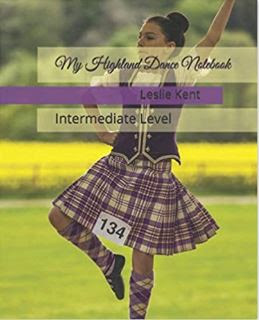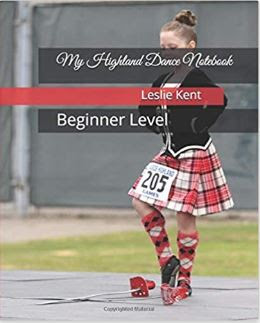Climbing the Highland ladder...to the Intermediate Level
Today I'd like to give you a close up of the Intermediate level Notebook. This has been our highest seller so far. :)
Intermediate dancers are often in their early teens, although keep in mind that some children move more swiftly through the levels, or begin dancing later than others.
In the intermediate level, dancers are working on 8-10 dances, although 3-4 of these are continued from the Novice level and are likely quite confident.
As with the notebooks leading up to this, the Intermediate level book has note and practice chart pages, check lists for competitions and pages to document what medals or placements your dancer earns in competition. Because competition can become quite stiff by this level, an Intermediate dancer can move into the Premier level after one year, regardless of whether they've achieved 6 stamps on their card.
Intermediate dancers are often in their early teens, although keep in mind that some children move more swiftly through the levels, or begin dancing later than others.
In the intermediate level, dancers are working on 8-10 dances, although 3-4 of these are continued from the Novice level and are likely quite confident.
As with the notebooks leading up to this, the Intermediate level book has note and practice chart pages, check lists for competitions and pages to document what medals or placements your dancer earns in competition. Because competition can become quite stiff by this level, an Intermediate dancer can move into the Premier level after one year, regardless of whether they've achieved 6 stamps on their card.
This was the year my oldest daughter began noticing some physical strain from her dancing. She experienced pain in her feet and so at first she took a couple weeks off. After returning to dance, the pain did as well, and so we decided to have her take more significant time off. We coupled this with a trip to an osteopath, a type of health specialist we were not familiar with.
We've long been a family who regularly visits a chiropractor. I can detail a number of significant and amazing benefits we've seen from consistent treatment with a highly qualified chiropractor. This meant that I was quite open to taking my daughter to an osteopath, whose work was described to me as the "umbrella" of treatment under which chiropractic falls--however it also deals with soft tissue disorder and not just bone, as chiropractors do.
The first osteopath was recommended by my daughter's dance teacher, however, after a few visits, I wasn't feeling confident that this was the right doctor for us. I don't recall how I found the second specialist, but she has become a trusted practitioner now for my family, and with her treatments, my daughter began seeing improvement and relief from the pain of plantar fasciitis.
Highland dance is a wonderful pastime, but families should be aware of what type of concerns could crop up. May all your dancers be blessed with healthy feet!






Comments
Post a Comment